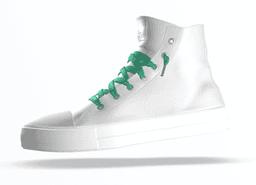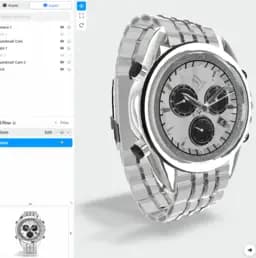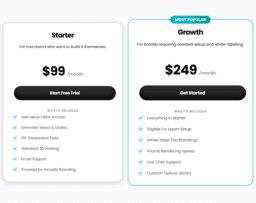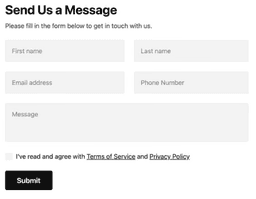From Novice to Knowledgeable: TouchDesigner vs Unity
For real-time, interactive multimedia artworks, TouchDesigner is an unmatched choice, with its comprehensive node-based visual programming. On the other hand, if you’re developing high-quality 2D/3D games or expanding into AR/VR, Unity shines with its asset-rich ecosystem and versatile platform compatibility.

Key Differences Between TouchDesigner and Unity
- Coding: TouchDesigner utilizes a visual node-based programming model, whereas Unity employs traditional scripting languages, including C# and Javascript.
- Pricing: Unity’s pricing is install-based, a model criticized by some developers, while TouchDesigner offers a diversity scholarship program.
- Primarily for: TouchDesigner is mainly used for interactive installations and art projects, Unity predominantly serves game development.
- Support: Unity provides a large, active developer community for assistance, TouchDesigner’s support comes via tutorials and courses from Grayarea.org.
- Platform versatility: Unity boasts cross-platform compatibility, including mobile. TouchDesigner is compatible with Windows and MacOS.
| Comparison | TouchDesigner | Unity |
|---|---|---|
| Founding Year | 2008 | 2005 |
| Application | Real-time Multimedia Content Creation | Game Development |
| Platforms | Windows, MacOS | Cross-platform, including Android and iOS |
| Programming Paradigm | Node Based Visual | Object Oriented |
| Tools | Procedural OpenGL compositing and effects pipeline, animating and controlling characters, devices, and lighting | Rendering technology, inbuilt physics engine, animation tools |
| Courses Available | Yes, by Grayarea.org | Yes, through Unity Learn |
| Community | Artists, coders, designers | Game developers |
| Unique Features | Real-time interactions, immersive experiences, interactive installations, performance tools, generative visuals | High-quality game creation, vast pre-designed graphic library in the asset store, AR/VR content creation |
| Languages | Python | BOO Script, Javascript, C# |
What Is TouchDesigner and Who’s It For?
TouchDesigner is a versatile node-based visual programming language designed primarily for interactive multimedia content development. Developed by the Toronto-based company Derivative, TouchDesigner is a strategic tool for artists, programmers, designers, and performers aiming to push creative boundaries through immersive exhibitions, performances, and media works.
Whether you want to create cutting-edge visual effects, conduct 3D geometry generation, or develop interactive installations for live shows, TouchDesigner is a skillful ally. With robust features supporting everything from video mapping to interactive software, this platform is the go-to choice for anyone involved in the immersive digital art space.

Pros of TouchDesigner
- Pioneered procedural OpenGL compositing and effects
- Wide range of features supporting various multimedia developmental needs
- Offers extensive interoperability
- Compatible with both Windows and MacOS
- Scholarship diversity programs available with rigorous training courses
Cons of TouchDesigner
- Requires understanding of programming languages
- Learning curve can be steep
What Is Unity and Who’s It For?
Launched in 2005, Unity is a renowned game development engine empowering developers to create both 3D and 2D games. With an adaptable model, Unity supports a plethora of operating systems, offering intriguing possibilities from augmented reality to 3D simulations. Be it Android or iOS, Unity offers a dynamic platform for your cross-platform gaming needs.
With its mix of flexibly-priced versions, Unity caters to a wide range of developers from solo indie creators to larger development teams. Featuring a rich asset store, a variety of coding languages, and an active community, Unity offers an empowering suite for those vested in the video game industry.

Pros of Unity
- Supports cross-platform game development
- Features a vast range of pre-designed textures and tools
- Robust community for support and feedback
- Enables the inception of AR/VR features in games
Cons of Unity
- Recent pricing redesign led to backlash from developers
- Sudden changes in pricing model can affect developers’ financial stability
- Fees could potentially hamper digital preservation efforts
Code Examples for TouchDesigner & Unity
TouchDesigner: Interactive Particle System
This code creates an interactive particle system in TouchDesigner, using SOP (Surface operators). Place a sphere SOP in a geo container and add a render top to see your creation. Make sure you’ve chosen the correct renderer inside the render top, usually PBR.
# SOP Source
op('sop_delete1').par.bypass = False
op('sop_copy1').par.bypass = False
op('sop_torus1').par.rx = me.time.absSeconds
op('sop_sphere1').par.rz = -me.time.absSeconds
# Geometry Render Setup
op('render_pick1').par.pickop = 'render1'
op('render1').par.culldepth = False
op('geo1/mat1').par.opacitymap = ''
op('geo1').par.display = False
Unity: Procedural Mesh Generation
This Unity example showcases an elementary way to generate procedural meshes in Unity. It uses simple mathematical functions. Ensure you have Unity version 2018.3.1 or above and have enabled “unsafe code” in your project settings to execute seamlessly.
using UnityEngine;
public class ProceduralMesh : MonoBehaviour
{
Mesh mesh;
Vector3[] vertices;
int[] triangles;
public int xSize = 1, zSize = 1;
private void Awake()
{
mesh = new Mesh();
GetComponent<MeshFilter>().mesh = mesh;
CreateShape();
UpdateMesh();
}
void CreateShape()
{
vertices = new Vector3[(xSize + 1) * (zSize + 1)];
for (int i = 0, z = 0; z <= zSize; z++)
{
for (int x = 0; x <= xSize; x++)
{
vertices = new Vector3(x, 0, z);
i++;
}
}
triangles = new int;
}
void UpdateMesh ()
{
mesh.Clear();
mesh.vertices = vertices;
mesh.triangles = triangles;
mesh.RecalculateNormals();
}
}
A Verdict of Technologies | TouchDesigner vs Unity
The conundrum of choosing between TouchDesigner and Unity as your AR/VR development tool resides in their unique tiles. Both are champions of their domains, but their versatility differs.
Performers and Installation Creators
If you happen to be in the thespian space or wish to erect immersive installations, you’ll find your camrade in TouchDesigner. The language’s prowess in real-time interactive multimedia gives you the edge. Its potent features covering 2D/3D production, scripting, and custom control panels prove invaluable. Over time, you’ll appreciate its compatibility with Windows and MacOS and the myriad of touch designer courses available.

Game Developers
For enthusiasts crafting games, Unity shines. Common tongues of development like Javascript, C# harness your skills on an engine known for its adaptability and wide-ranging application creation. Benefit immediately from the rich asset store and active developer community. Apply caution, though: new pricing model effective January 2024 requires vigilance.

The Tech Novices
Hello newbie! TouchDesigner offers scholarship diversity programs to navigate through your nascent programming steps. Its Python independence is an advantage. Consequently, become apt at multitude applications from music visualization to 3D geometry generation.

The Indie Developers
Are you a solo game developer or do you class as indie? Here’s your caveat: Post January 2024, Unity charges per install. But relief comes with fraud detection for pirated copies. Not forgetting, Unity’s solid commitment to AR/VR games makes it worth the risk.

Know thy tools to master creation. TouchDesigner dazzles with its real-time interactive multimedia. Ideal for performers, installation creators, and beginners. On the contrary, Unity boasts adaptability, flexibility, and vast application offerings, a dreamland for game developers, despite its new pricing caveat. Choose wisely!







